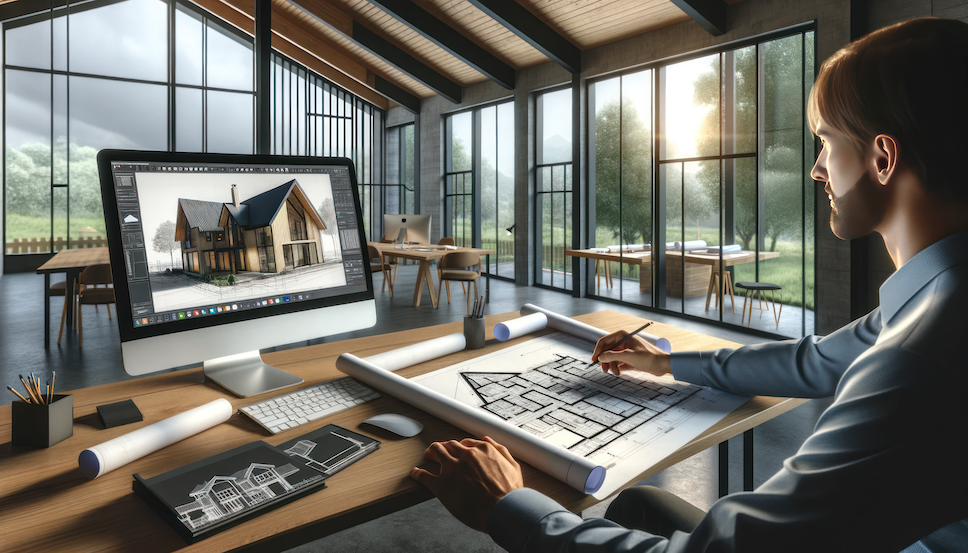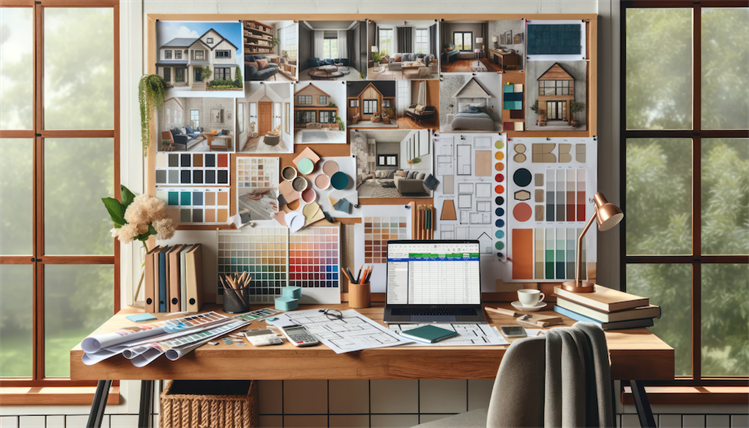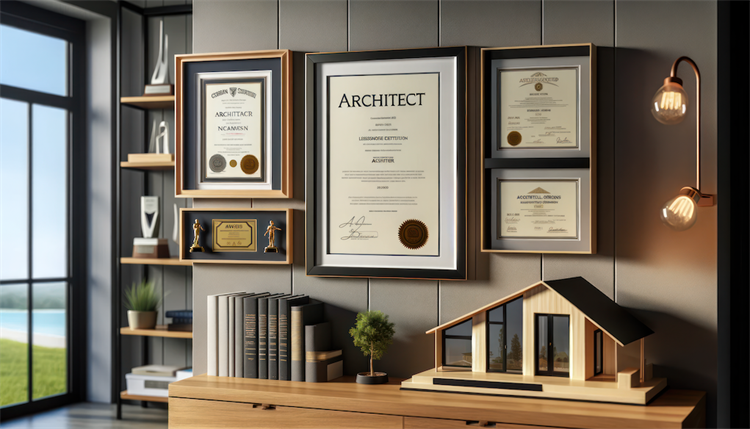Avoid These 3 Mistakes When Hiring an Architect for Your Custom Home

Hiring an architect for your custom home is a pivotal decision that requires careful consideration. This choice goes beyond mere aesthetics; it's about investing in your future home's value and ensuring your vision is realized efficiently and effectively.
The three major mistakes to avoid when hiring an architect for a custom home include: not clearly defining your needs and budget, failing to check the architect's credentials and experience, and neglecting the importance of communication and collaboration. Recognizing and avoiding these pitfalls can significantly influence the success of your custom home project.
This guide delves into each of these common errors, providing insights and tips to help you make a well-informed decision. By understanding these mistakes, you can choose an architect who not only brings creativity to the table but also understands the financial and practical aspects of building your dream home. Continue reading to learn how to navigate the architect selection process, understand the design process, and manage project timelines effectively.
Table of Contents:
- Mistake 1: Not Defining Your Needs and Budget
- Mistake 2: Failing to Check Credentials and Experience
- Mistake 3: Neglecting Communication and Collaboration
- The Architect Selection Process
- Custom Home Design Process
- Understanding Architect Fees and Costs
- Architect Responsibilities and Qualifications
- Architect Communication and Collaboration
- Project Management and Timeline
- Frequently Asked Questions
Key Takeaways:
- Define your custom home goals and budget with precision.
- Verify an architect's credentials and experience thoroughly.
- Ensure open communication and collaboration for project success.
The significance of choosing the right architect for your custom home cannot be understated.
This professional is not just a service provider but a visionary who will lead the path to your future habitat.
Acknowledging the gravity of this decision, we delve into three common mistakes to avoid during the selection process, ensuring your custom home is nothing short of perfection.
Mistake 1: Not Defining Your Needs and Budget

A) Clarifying Your Vision
Before setting foot in an architect's office, have a crystal-clear idea of what you want your custom home to embody. Ambiguity can be the root of all cost overruns and design missteps.
- Define the non-negotiables: List out features that your custom home must have.
- Set a realistic budget: Know what you can afford and communicate this clearly.
B) Budget Breakdown
Creating a detailed budget breakdown is essential.
Here's an example of how to itemize your budget:
| Aspect | Percentage of Budget |
| Site Work | 10% |
| Building Materials | 25% |
| Labor | 30% |
| Interior Finishes | 20% |
| Contingency | 15% |
Refer to Brandon Construction Group's insights on constructing a dream home on a budget for further guidance.
Mistake 2: Failing to Check Credentials and Experience

A) Essential Credentials
Hiring an architect without verifying their credentials can lead to a multitude of issues. Ensure the architect you're considering has the following:
- Licensure: Mandatory for practicing architects.
- NCARB Certification: Facilitates interstate professional mobility.
- AIA Membership: Indicates adherence to a code of ethics and professional conduct.
B) Experience Matters
Reviewing an architect's portfolio gives you insight into their expertise and design style. Visit Brandon Construction Group's portfolio to see examples of exemplary architectural work.
Mistake 3: Neglecting Communication and Collaboration
Building a Partnership
The relationship between you and your architect is a partnership. It requires:
- Regular meetings: To review progress and make timely decisions.
- Clear communication: Especially regarding design changes.
- Feedback loops: To ensure your needs are being met at every stage.
Learn about maintaining effective communication with professionals at Brandon Construction Group's contact page.
The Architect Selection Process
Step-by-Step Guide
The process of selecting an architect should be meticulous and well-researched. Follow these steps to ensure a thorough vetting:
- Identify Potential Candidates: Look for architects with experience in residential architecture.
- Review Their Work: Visit their website, review their past projects, and read client testimonials.
- Initial Consultation: Set up meetings to discuss your project and evaluate their communication skills.
- Compare Proposals: Evaluate their proposed solutions and how well they align with your vision and budget.
Table: Architect Selection Criteria
| Criteria | Importance | Notes |
| Experience | High | Look for a track record in residential projects. |
| Communication Skills | High | Must be able to clearly articulate ideas and changes. |
| Design Philosophy | Medium | Should align with your vision for your home. |
| Professional Affiliations | Medium | Indicates professionalism and network. |
For a deeper dive into what makes an architect stand out, explore the About page of Brandon Construction Group.
Custom Home Design Process
The Architectural Journey
Understanding the steps your architect will take to design your custom home is critical. Here's a brief overview:
- Conceptual Design: Initial sketches and discussions to capture your vision.
- Schematic Design: More detailed drawings and preliminary cost estimations.
- Design Development: Refinement of drawings and specifications.
- Construction Documents: Final detailed drawings and specs used for construction.
Table: Design Process Phases
| Phase | Description | Deliverables |
| Conceptual | Brainstorming and sketching ideas. | Concept sketches. |
| Schematic | Developing the initial concept. | Preliminary design drawings. |
| Design Development | Refining the design. | Detailed drawings and material specs. |
| Construction Documents | Finalizing the design. | Construction-ready documents. |
For further details on the custom home design process, consider the insights provided on Brandon Construction Group's blog.
Key Considerations:
- Architect fees: Typically a percentage of the overall construction cost.
- Project timeline: Can vary based on complexity and revisions.
- Architectural style: Ensure the architect has experience in the style you prefer.
For insights into living by the sea and how it might influence your architectural choices, this article offers valuable perspectives.
Understanding Architect Fees and Costs
The Cost Structure
Architects can charge for their services in several ways: a percentage of the project cost, a fixed fee, or an hourly rate.
It's important to understand these structures:
| Fee Structure | Description | When to Use |
| Percentage of Project Cost | A certain percentage based on the total cost. | For projects where the total cost is predictable. |
| Fixed Fee | A set amount for the entire project. | When the scope of the project is clear and unlikely to change. |
| Hourly Rate | Charged based on the time spent. | For projects that may have an evolving scope or undefined parameters. |
Understanding these structures can prevent budgetary surprises and is crucial for project management.
For more information on managing your home building project, consider the insights from Brandon Construction Group's blog on building energy-efficient homes.
Architect Responsibilities and Qualifications
Ensuring Competence and Skill
An architect's responsibilities extend beyond creating designs. They must navigate complex zoning laws, understand structural integrity, and manage construction contracts.
Qualifications typically include:
| Qualification | Description | Why It's Important |
| Professional Degree | A degree from an accredited institution. | Ensures formal training in architecture. |
| Licensure | A state-issued license to practice architecture. | Legally required to practice and ensures accountability. |
| Continuing Education | Ongoing learning to stay current. | Keeps the architect updated on the latest in design and technology. |
Make sure to ask about these qualifications and responsibilities during your interview process, and for more details on what to expect, Brandon Construction Group's about page provides further clarity on the expertise of their team.
Architect Communication and Collaboration

The Heart of the Project
A successful project is often defined by how well the homeowner and architect communicate.
Ensure that you have a detailed contract in place that outlines the expectations for both parties.
| Communication Aspect | Description | Importance |
| Meeting Schedule | Regularly scheduled meetings throughout the project. | Keeps both parties aligned and informed. |
| Change Process | A clear process for handling changes to the design or scope. | Prevents misunderstandings and delays. |
| Collaboration Tools | Use of software or tools for project management and communication. | Enhances clarity and record-keeping. |
To see how professional teams manage communication and project collaboration, visit Brandon Construction Group's contact page for examples of best practices.
Project Management and Timeline
Staying on Track
Effective project management is key to keeping a custom home project on schedule and budget.
The following table outlines the phases of the project and what to expect during each:
| Project Phase | Activities | Duration |
| Pre-Design | Site analysis, feasibility studies. | 1-2 months |
| Design | Concept development, schematic design, design development. | 3-6 months |
| Construction Documentation | Preparing detailed drawings and specifications. | 2-4 months |
| Construction | Actual building of the home. | 6-12 months |
For a detailed breakdown of the home building process, consider Brandon Construction Group's portfolio, which showcases various project timelines.
Frequently Asked Questions
-
How much does it cost to hire an architect for a custom home?
- The cost can vary widely, typically between 5% to 20% of the construction costs. For a more detailed analysis, reference the cost structures table provided above.
-
What questions should I ask an architect when hiring them?
- Inquire about their experience with residential projects, their design philosophy, and how they manage project communication. For a list of essential questions, this article may provide further insights.
-
How do I choose the right architect for my custom home?
- Look for someone whose portfolio aligns with your style, who has the right qualifications, and with whom you can communicate effectively. Dive into the selection process table for more tips.
-
What are the different types of architectural styles?
- Styles range from traditional to modern, coastal to country. Choosing a style that resonates with your taste and the environment is crucial. Explore different styles through Brandon Construction Group's blog posts.
-
What is the role of an architect in the custom home building process?
- An architect is responsible for the design, documentation, and often the oversight of the construction process. For more on the role of an architect, visit Brandon Construction Group's about page.
Final Thoughts
Ready to roll up your sleeves and start your custom home journey? The right architect is waiting for you at Brandon Construction Group.
Don't just dream about it, do it! Give them a ring at 910.262.8929 or head over to their contact page.
It's time to turn those blueprints into reality!
